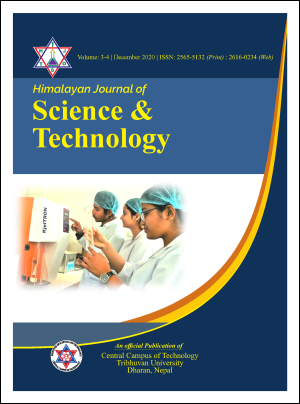Isolation of Bacillus thuringiensis and its Insecticidal Effect against Galleria mellonella
DOI:
https://doi.org/10.3126/hijost.v4i0.33918Keywords:
Bacillus thuringiensis, Cry Protein, Galleria mellonella, BiopesticidesAbstract
Bacillus thuringiensis (Bt) synthesize a large diversity of crystal proteins (Cry and Cyt) during sporulation which exhibit insecticidal activity against insects and protozoa. The main aim of this study was to isolate Bacillus thuringiensis and study its insecticidal effect against Galleria mellonella. Soil samples from four different geographical locations of Koshi Zone viz. Itahari, Tarhara, Dharan and Vedetar of Eastern Nepal were collected. The isolation of Bt was done by acetate selection method. The insect bioassay of Bt isolates were performed against greater wax moth (G. mellonella) by feeding the third instar larvae by extracted crystal spores with three different concentrations. The overall distribution of Bt from the study sample was found to be 30% (30/100). Bt was isolated from all four geographical location with higher incidence; 9 (36%) in Tarhara region followed by Dharan (32%), Itahari (28%) and Vedetar (24%). However, the incidence of Bt with potent insecticidal activity against G. mellonella was reported to be 4% (4/100). The insecticidal activity of isolated Bt between test and control groups was found to be statistically significant (p<0.05). LC50 value of Bt from Tarhara (Tar1) was 388.29μg/mL, Dharan; Drn8 and Drn1 was 416.20μg/mL and 463.15μg/mL respectively and from Vedetar (Vd5) was 476.63μg/mL. In overall study the Bt isolated from Tarhara (Tar1) region exhibited greater incidence, Bt index, efficacy and effective level of LC50 against greater wax moth. Native Bt strains isolated from soil of Eastern Nepal possess effective insecticidal activity and hence can used as biocontrol agent in controlling honeycomb pest like G. mellonella.
Downloads
Downloads
Published
How to Cite
Issue
Section
License
© Himalayan Journal of Science and Technology
All rights reserved.




